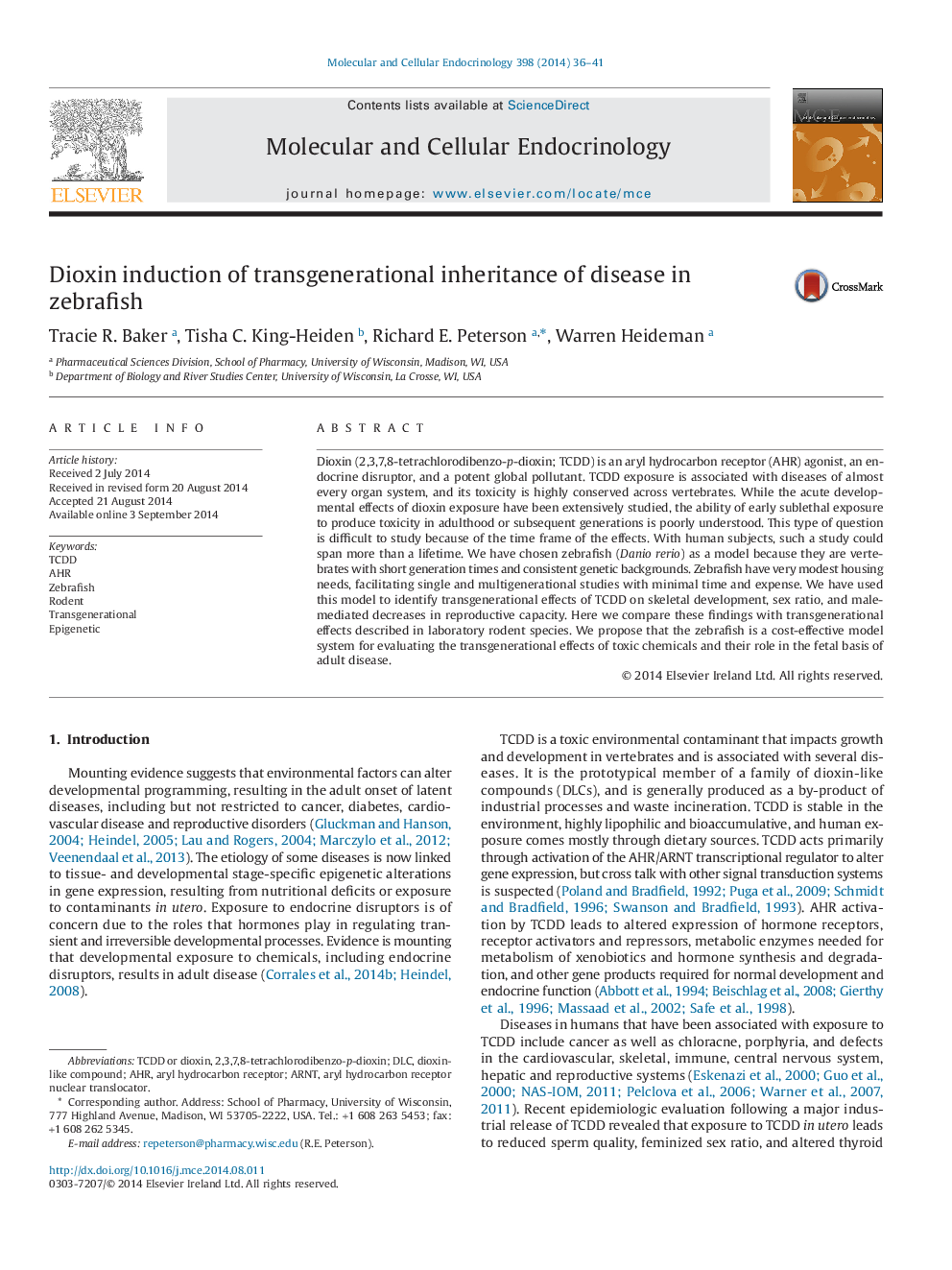| کد مقاله | کد نشریه | سال انتشار | مقاله انگلیسی | نسخه تمام متن |
|---|---|---|---|---|
| 2195916 | 1550880 | 2014 | 6 صفحه PDF | دانلود رایگان |
• We review transgenerational effects of dioxin in fish and other vertebrate species.
• Zebrafish model is ideal for investigating multigenerational effects of chemicals.
• Dioxin induces transgenerational skeletal and reproductive phenoytpes in zebrafish.
Dioxin (2,3,7,8-tetrachlorodibenzo-p-dioxin; TCDD) is an aryl hydrocarbon receptor (AHR) agonist, an endocrine disruptor, and a potent global pollutant. TCDD exposure is associated with diseases of almost every organ system, and its toxicity is highly conserved across vertebrates. While the acute developmental effects of dioxin exposure have been extensively studied, the ability of early sublethal exposure to produce toxicity in adulthood or subsequent generations is poorly understood. This type of question is difficult to study because of the time frame of the effects. With human subjects, such a study could span more than a lifetime. We have chosen zebrafish (Danio rerio) as a model because they are vertebrates with short generation times and consistent genetic backgrounds. Zebrafish have very modest housing needs, facilitating single and multigenerational studies with minimal time and expense. We have used this model to identify transgenerational effects of TCDD on skeletal development, sex ratio, and male-mediated decreases in reproductive capacity. Here we compare these findings with transgenerational effects described in laboratory rodent species. We propose that the zebrafish is a cost-effective model system for evaluating the transgenerational effects of toxic chemicals and their role in the fetal basis of adult disease.
Journal: Molecular and Cellular Endocrinology - Volume 398, Issues 1–2, December 2014, Pages 36–41
